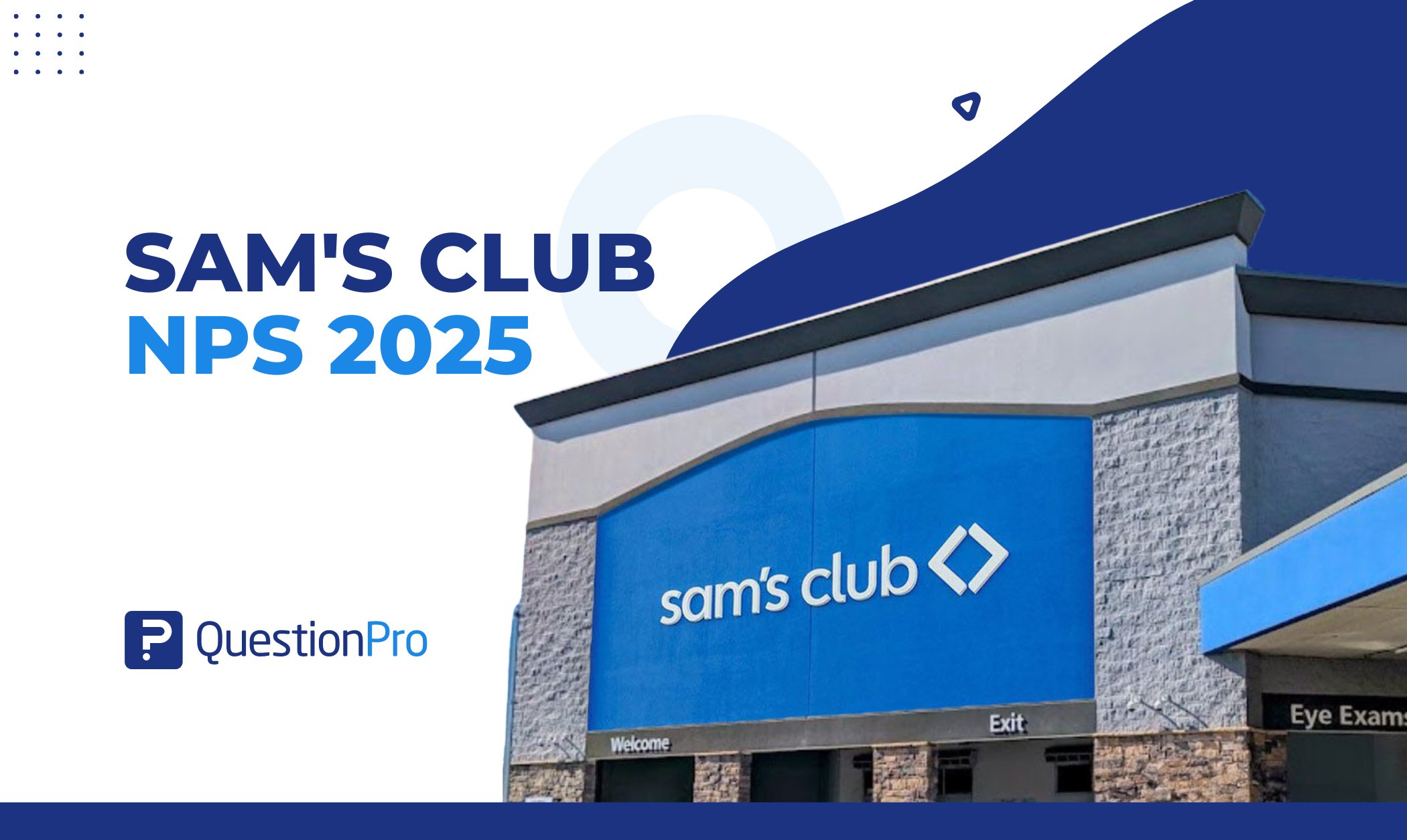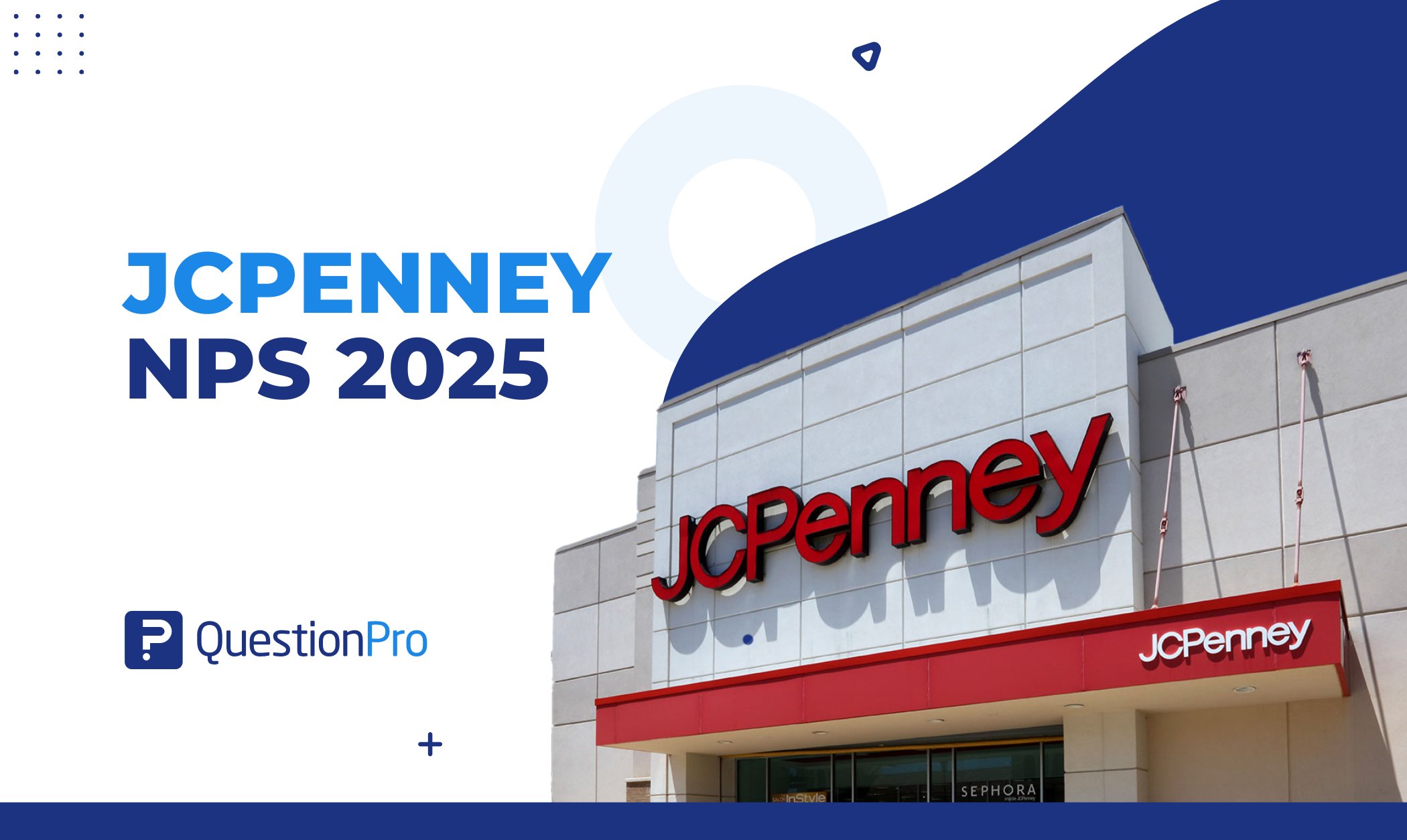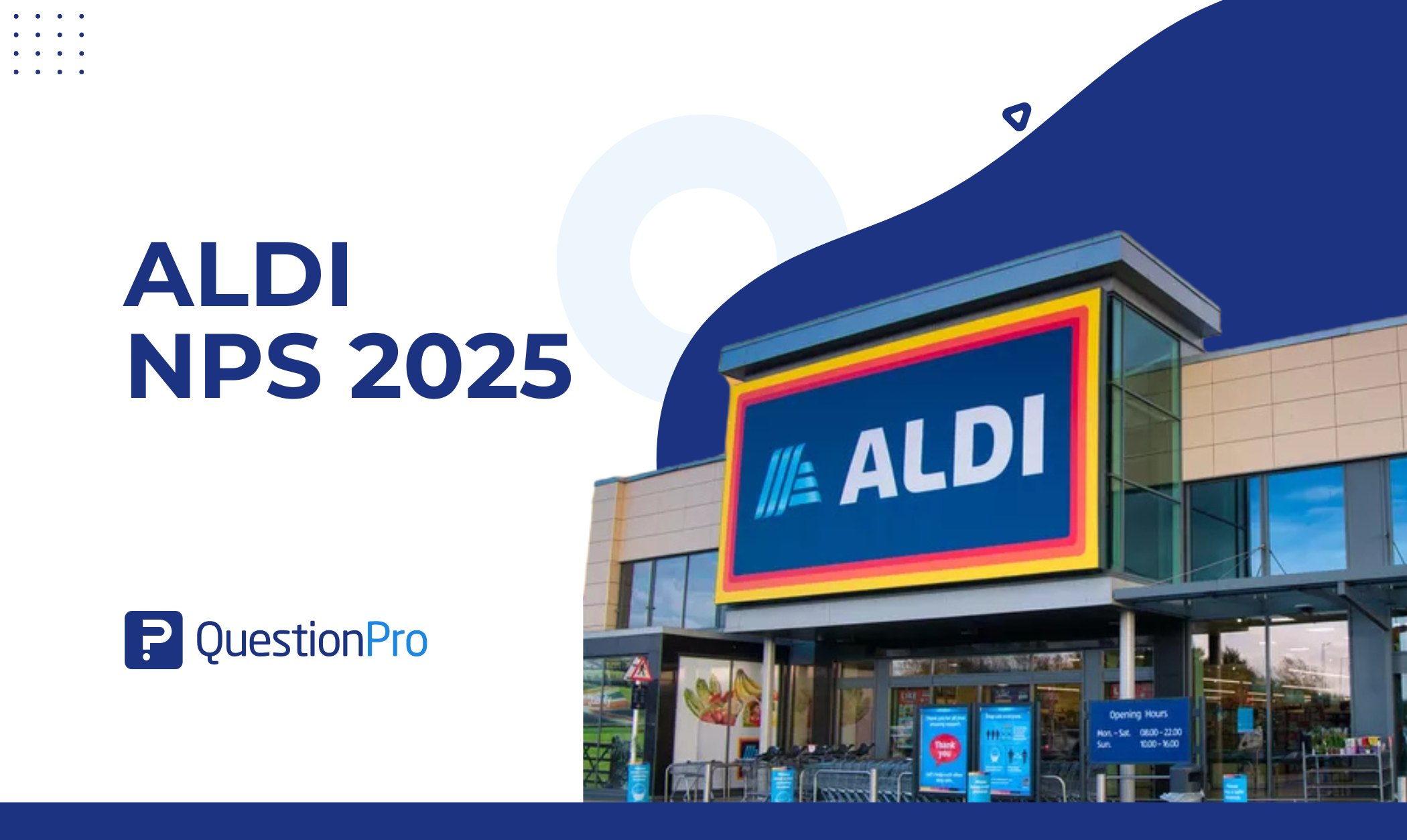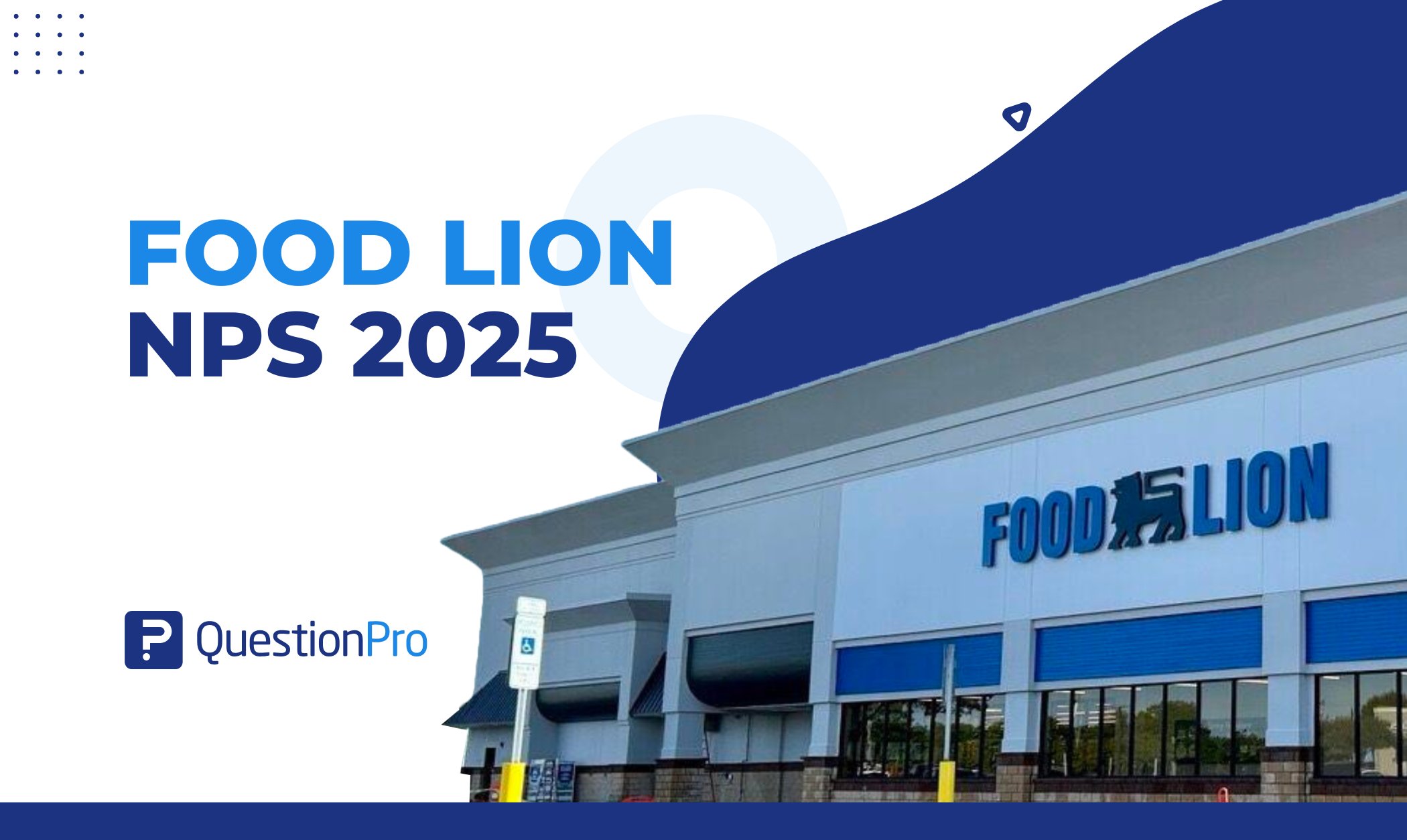
Understanding how customers feel about your brand is not just helpful—it is essential. That is why many companies rely on the Net Promoter Score (NPS) to gain a clear, honest understanding of customer satisfaction and loyalty.
In this post, we will explore Food Lion NPS score, how the score compares to the grocery industry average, and what reveals about customer sentiment.
What is Net Promoter Score?
Net Promoter Score (NPS) is a simple way to measure customer satisfaction and loyalty. It’s particularly popular in industries like the grocery industry because it gives businesses a quick snapshot of how people really feel about their experience.
It all starts with this one question:
“On a scale of 0 to 10, how likely are you to recommend us to a friend or colleague?”
That’s it—just one question. But from the answers, you can learn a lot about your customers. Based on their responses, you can categorize them into three groups:
- Promoters (9–10): These are your brand advocates. They love what you do and are likely to recommend you to others.
- Passives (7–8): These customers are generally satisfied but aren’t excited enough to actively promote you.
- Detractors (0–6): These customers had a negative experience and may even discourage others from engaging with your brand.
Once you’ve collected enough responses, calculating your NPS is easy:
NPS = % of Promoters – % of Detractors
A high NPS means your customers are happy and loyal, which is great news for your brand. On the other side, a low score may signal that something isn’t quite right and could be turning customers off.
But what’s a “good” NPS? That depends on your industry. Comparing your score to others in the same field can help you understand how well you’re doing and where there’s room for improvement.
Food Lion NPS Score and Performance
According to QuestionPro’s Q1 2025 Benchmarking NPS and CSAT Report, the average NPS for the grocery industry is 37. However, Food Lion’s NPS score is 31, which is lower than the average score.
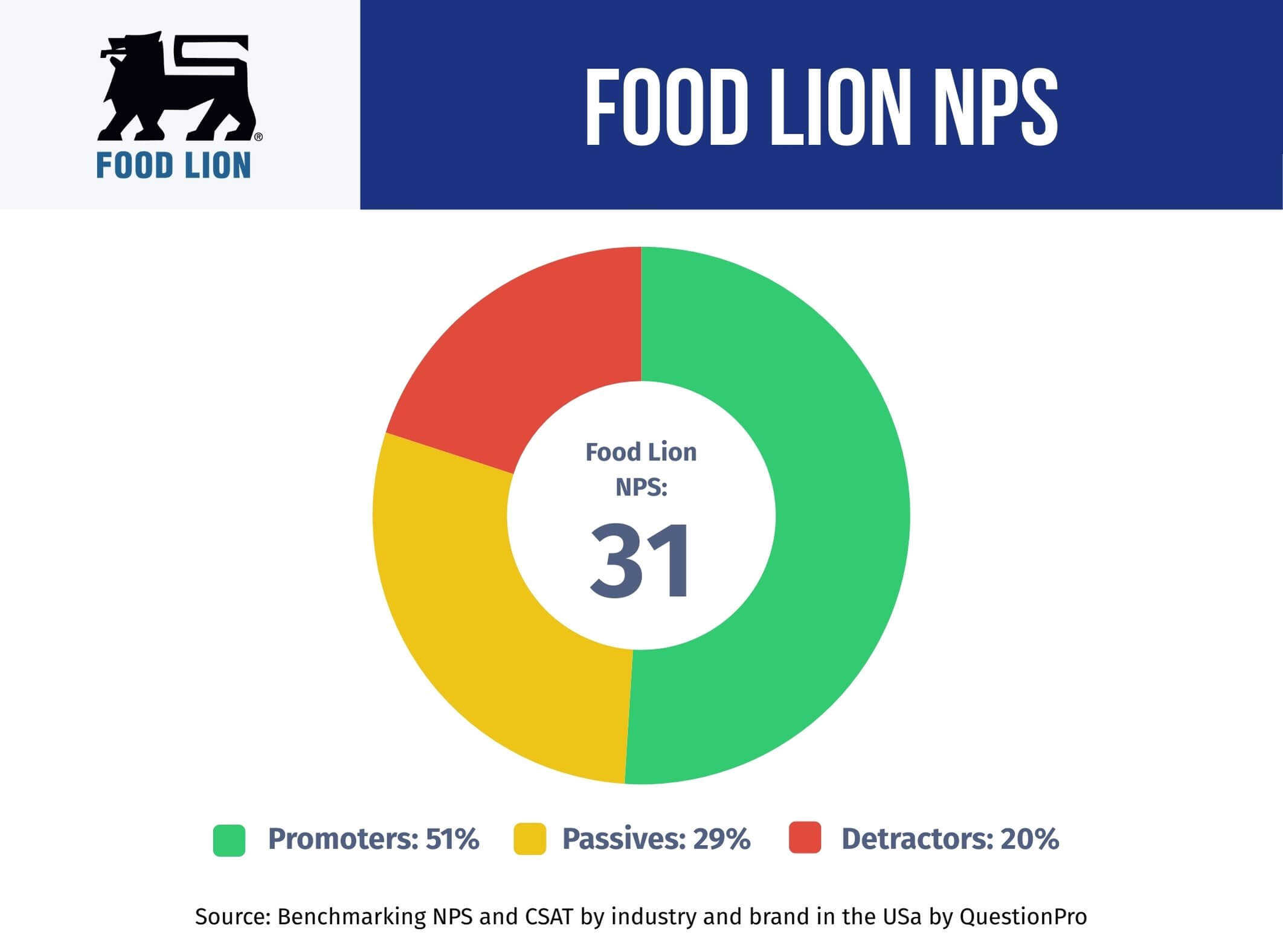
Let’s take a closer look at Food Lion’s NPS score breakdown:
- Promoters: 51%
- Passives: 29%
- Detractors: 20%
While more than half of Food Lion’s customers are promoters, the 20% who are detractors are holding the brand back from a higher score. Even though many shoppers have a positive experience, there’s still a noticeable number who are dissatisfied. To build stronger loyalty, Food Lion must address those pain points and work on turning those unhappy customers into advocates.
How Does Food Lion NPS Score Compare to Industry Benchmarks?
Food Lion’s NPS score is significantly below the grocery industry average of 37, indicating that fewer customers are likely to recommend the store than other grocery chains.
Although some shoppers have positive experiences, the lower score highlights that many see areas for improvement. Whether it’s customer service, the overall store experience, or product selection, addressing these pain points could help Food Lion strengthen customer loyalty.
By identifying what’s not working and making the necessary changes, Food Lion can win back dissatisfied customers and improve long-term loyalty.
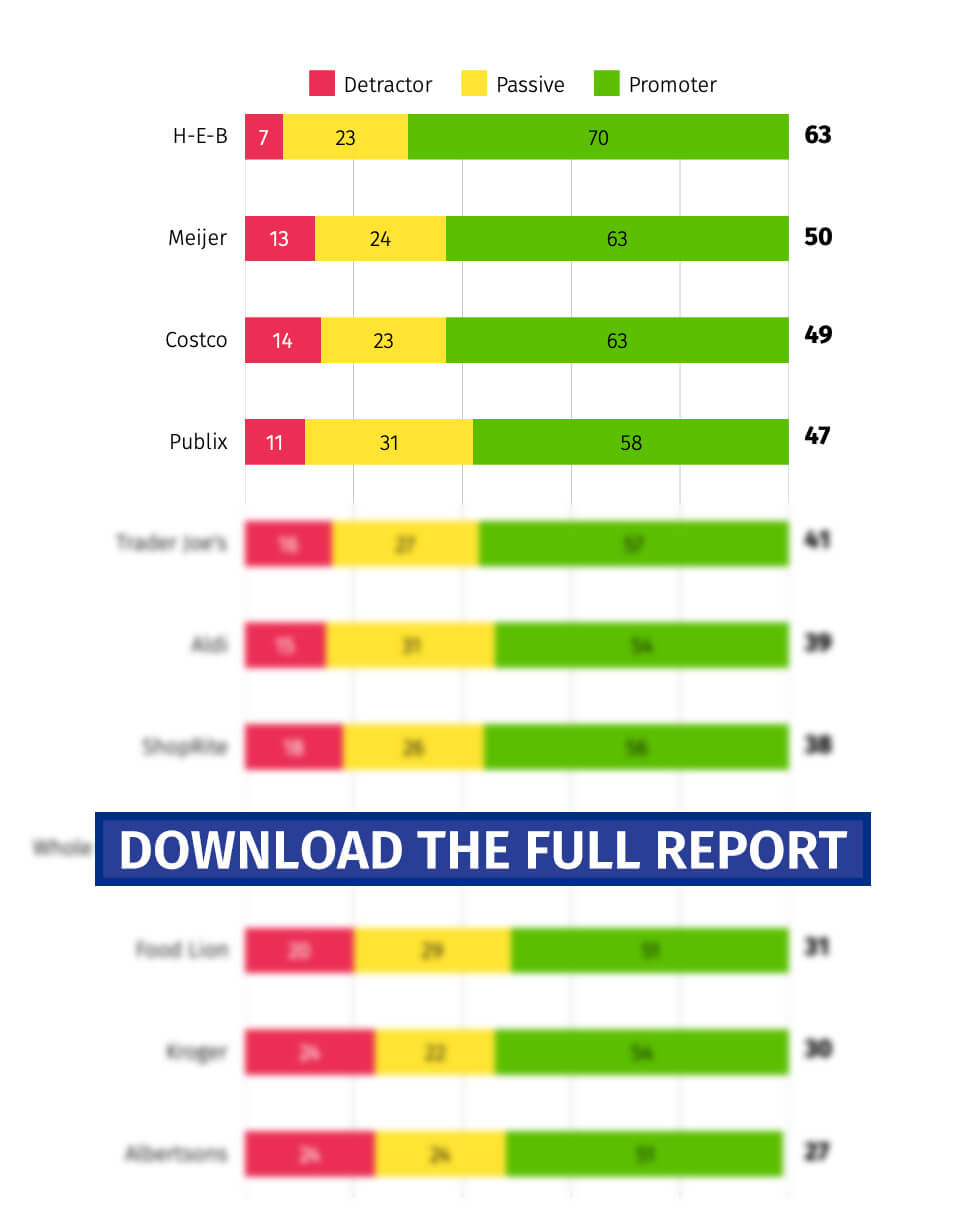
These insights come from QuestionPro’s latest study, which surveyed 1,000 participants to assess the NPS across various companies and industries. The report is based on real user opinions from Q1 2025 and is updated quarterly.
What’s Impacting Food Lion’s NPS Score?
Food Lion NPS score tells a mixed story. Some customers stay loyal because of the brand’s convenience and savings, but others point out repeat frustrations that make them less likely to recommend it to friends or family.
Here’s a closer look at what is causing those scores to decrease and what is preventing them from declining further:
Negative Influences Dragging Down Customer Sentiment
Food Lion’s NPS struggles due to its customers’ shared negative shopping experiences. These negative experiences easily overshadow what Food Lion does well and decrease customer satisfaction.
- Customer Service Issues: A lot of the negative feedback centers on customer service. Long checkout lines, unhelpful staff, and poor handling of complaints come up again and again. Specific instances of perceived poor service or negative interactions can significantly detract from customer satisfaction and their willingness to recommend.
- Product Quality and Stock Issues: Dissatisfaction with the quality of fresh produce, meat, and other products, along with issues related to items being out of stock, can lead to negative experiences.
- Store Environment and Cleanliness: The overall shopping experience, including store cleanliness, organization, and the general atmosphere, plays a crucial role in customer satisfaction. Negative perceptions in these areas can contribute to a lower NPS.
- Perception of Pricing and Value: While Food Lion is affordable, some customers feel the prices don’t reflect the quality or selection offered. This disappointment can quickly lead to detractors.
- Glitches in the Online Shopping Experience: Issues with the online grocery ordering process and app glitches can lead to frustration and a lower NPS for customers using these services.
- Loss of Trust from Incidents: Events such as product recalls or security breaches, like the reported cyber attack, can undermine customer trust and negatively affect their perception of the brand.
Positive Factors That Help Support the Score
While there are clear challenges, there are also key factors that help prevent Food Lion’s NPS from declining further. These positive experiences help balance out the frustrations others feel.
- Loyalty Program (MVP Card): Discounts and rewards through the MVP card help some customers feel rewarded. As a result of this loyalty program, customers remain loyal to the brand despite frustrations.
- Convenient Locations: For many shoppers, Food Lion is simply the most accessible option nearby. That convenience can be enough to keep customers coming back, even if everything is not perfect.
- Product Guarantees: Food Lion’s refund policy for unsatisfactory products could be a positive point for some customers. It won’t fix everything, but it helps.
- Specific Departments or Services: While some stores struggle, some shoppers mention great experiences with specific team members, especially at the deli or checkout. Those little moments of connection could lead to promoter scores.
How to Measure and Improve Your NPS?
Curious about how your company’s NPS stacks up against industry leaders? Platforms like QuestionPro make it easier than ever to find out.
Here’s how you can get started:
- Create an NPS Survey
Use QuestionPro’s NPS question to gather customer feedback. For deeper insights, add an AskWhy follow-up question to better understand the reasons behind their scores.
- Distribute the Survey
Reach your audience through various channels, such as SMS, email, QR codes, or direct links. You can also use QuestionPro Audience to target industry-specific respondents.
- Analyze Results in Real Time
Instantly see who your promoters, passives, and detractors are. The NPS score is automatically calculated, which makes the analysis quick and simple.
- Take Action
Use the insights from your survey to guide your next steps, especially in areas where scores are lower, and implement strategies to improve customer satisfaction.
With QuestionPro’s NPS tool, businesses can track, measure, and improve customer satisfaction with real-time analytics and benchmarking features.
Want to Stay Ahead? Download the Latest NPS Report
Keep informed with the latest Q1 2025 NPS benchmarks and discover how leading brands drive customer loyalty.
Need help improving your NPS? Contact QuestionPro for expert guidance on measuring and boosting customer satisfaction.
Food Lion isn’t the only company in the grocery industry with valuable lessons for those looking to improve their customer service and experience. Below, we recommend a few articles where you can learn how other major brands manage to maintain a high NPS and a loyal customer base — you’ll surely find some useful insights along the way.




